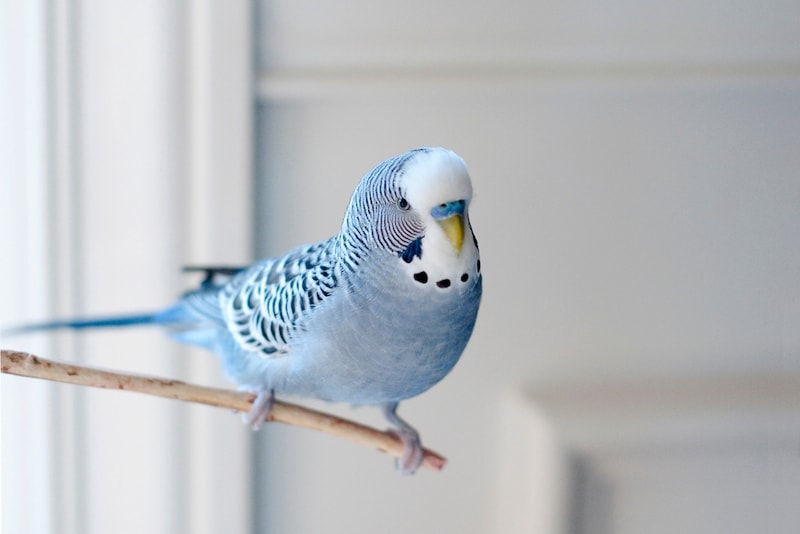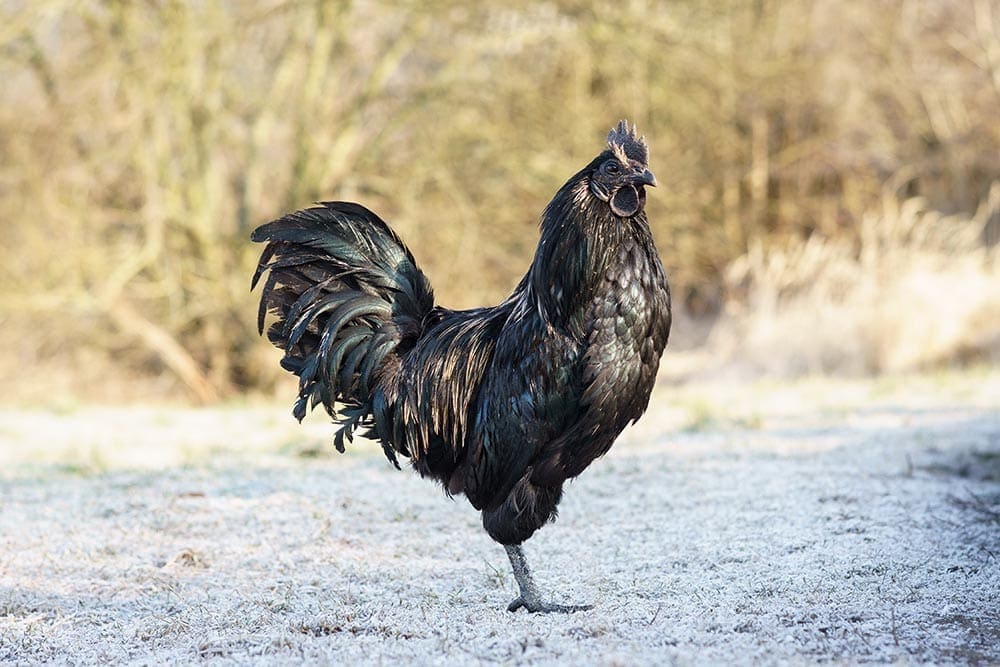Monk Parakeet: Pictures, Personality, Diet, Care Guide & More
Updated on

Click to Skip Ahead
If you’re looking for a sprightly, charming bird with lots of personality, you may want to look into adopting a monk parakeet (Myiopsitta monachus). Also known as the Quaker parrot, this prolific and chatty green parakeet is smart enough to be trained to talk and perform adorable tricks, but small enough to not require a ton of upkeep. If you’re interested in getting one of these parrots for yourself, look no further than our comprehensive guide down below dedicated to none other than the monk parakeet.
Species Overview
| Colors: | Green, blue, gray, white, yellow |
| Size: | 11 inches |
| Weight: | 3 to 5 ounces |
| Lifespan: | 15 to 20 years (average), 22 years (record) |
| Wingspan: | 19 inches |
Some people know the monk parakeet as a verbose and easygoing companion, while others may have heard about their penchant for agricultural chaos. Either way, their bright character, trainability, and lack of any bad bones in their body make them great birds for nearly anyone who’s willing to learn how to care for them.
Monk Parakeet Characteristics
History & Natural Habitat
The monk parakeet was first discovered by French naturalist Georges-Louis Leclerc, Comte de Buffon in 1780 and described among other discoveries in his seminal book Planches Enluminées D’Histoire Naturelle. Later, Charles Darwin himself would refer to the species as a “major agricultural pest.” Nobody’s quite sure where the bird was actually discovered, but they were soon found to be native to a swathe of South America including Brazil, Argentina, and Uruguay.
Despite their unsavory reputation at home, the monk parakeet had an endearing character and became a popular household pet in the US and numerous European countries, most notably Spain. Preferring to live in open woodlands, they adapted superbly to living among humans in urban areas. From the 1960s to the 1980s thousands of monk parakeets escaped or were released into the wild and many formed self-sustaining feral populations. Monk parakeets are still very common in their original South American habitat, but they’re a common sight all across the world today.
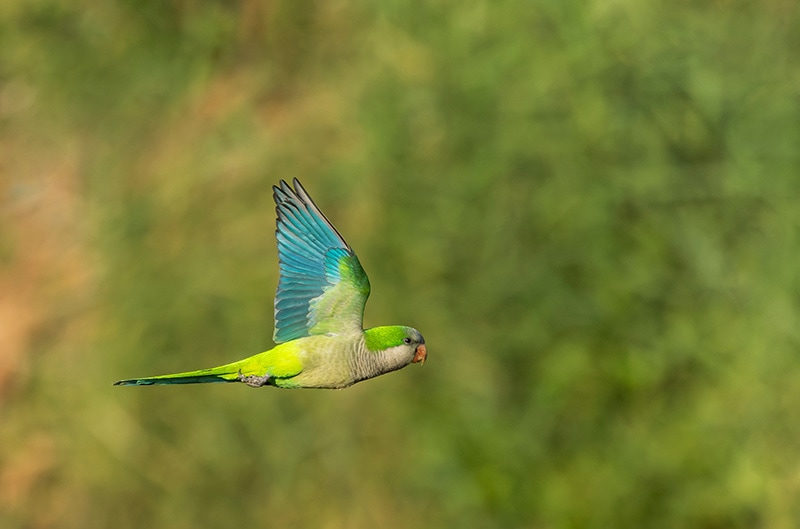
Things to Know When Owning a Monk Parakeet
Temperament
The monk parakeet is a great first-time bird because they’re one of the most amiable and trainable species you can own. They love to explore, play, and chatter about while they’re at it, but they really love their favorite people. This is a very active species that loves to hang out with you, and if you ignore them, their wicked sense of humor will come up with some seriously wacky hijinks. There’s a very good reason you hear these birds referred to as clowns!
We like to say that the monk parakeet doesn’t realize they’re just a wee bird because their larger-than-life personality makes them a loving addition to any household that loves to smile. This species is known to bond closely with a single human, but they’re friendly with everyone. Monk parakeets are generally active birds, but they’re not hyperactive and love cuddling at the end of the day.
Sounds, Speech & Vocalizations
Monk parakeets are famous for their chattiness, from singing, chirping, screaming, squawking, whistling, and yes, imitating human speech! They don’t have the raw vocabulary of the African grey, who remains the champ (but not the record holder) in that regard, but monk parakeets are no avian linguistic slouch. Vocabularies of 50 words or more aren’t uncommon, and the more they hear human speech, the more they’ll want to mimic it.
If you want to encourage your monk parakeet to talk, start with the shortest, most basic words that children learn: hi, bye-bye, good bird, night-night, and their names are good words to start with. Monk parakeets can learn to string words together into phrases that resemble sentences, but they generally learn words faster when they’re short with just one or two syllables.
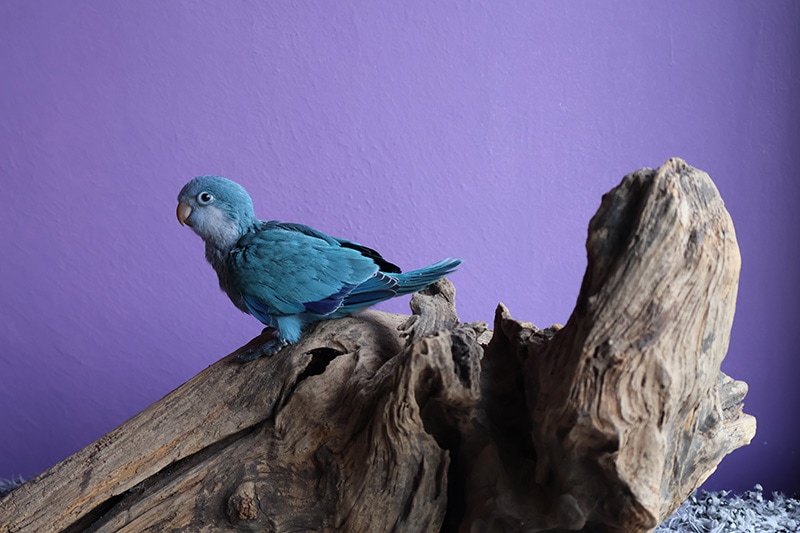
Monk Parakeet Appearance
Monk parakeets come in a stunning riot of colors, but the stock standard look is a yellowish-green abdomen with a gray face that stretches down to their breast like a monk’s hood or Quaker bib. Toward their strikingly long tail feathers, thighs, and belly, the feathers turn a lighter yellow, white, or gray. The iconic green-yellow monk parakeet is definitely the most common, but is far from the only color scheme they have to show off to the world.
As far as those genetic quirks we call color variations, the monk parakeet has an astounding variety of them. You can find these bright little avian buddies in nearly any color you could want. Check out a selection of them just below.
- Green opaline: A lighter, more vivid green with a distinctive lighter “V” on the back.
- Green pallid: Sort of opposite of opaline, green pallid is a more washed-out, green coloration.
- Olive: A darker olive bird with dark green and gray, retaining the trademark Quaker vest.
- Lutino: These cheery monk parakeets are primarily yellow with a soft gray or cream on the chest and tail feathers.
- Albino: Sometimes called white, albino colors are one of the rarest in the species.
- Blue: The second most common coloration besides the classic green.
- Blue pallid: Blue pallid is subtly lighter than the regular blue coloration, with pale sky-blue feathers.
- Blue palladino: The lightest blue variation in the breed.
- Gray-green: These monk parakeets have a variable mix of gray and darker green feathers.
- Turquoise: Among the rarest colors out there, featuring lovely turquoise veering from blue to green with a white breast.
- Cobalt: Glossy dark-blue feathers that approach black in the right light, usually with a white or light-gray chest.
- Cobalt pallid: Easily confused with the blue colors, cobalt pallid is a less vibrant cobalt.
Caring for the Monk Parakeet
Monk parakeets aren’t hard to care for, but it’s crucial to tailor your care to their uniquely active, curious, and sometimes mischievous ways. You’ll need a fairly large enclosure to give them ample space to play, with perches, toys, and very sturdy bars. This species can be voracious chewers and can quickly learn how to escape their cages if they get bored, so make sure to spend plenty of time with them outside their cage.
For recreation, a large water bowl as a bird bath will keep your monk parakeet clean, happy, and thoroughly entertained. Other than that, they love interactive toys like bells, enriching foraging toys, and tougher cardboard or wood to chew on.
This species can live happily as a single bird but may be happier in pairs when introduced gradually. Monk parakeets are territorial and don’t take kindly to you just plopping a new strange bird in their cage. To help them meet and form a bond, we suggest using another unused cage as a neutral setting for them to interact while minimizing potential aggression.
Diet & Nutrition
Monk parakeets are not picky eaters. They love seeds, nuts, grains, berries, leafy greens, and even the occasional bug that wanders into their cage. As far as a balanced diet goes, you want about 75% pellets, a small amount of vegetables (10%), and even smaller fractions of seeds and fruits.
Unlike their wild cousins, they can’t liberally eat seeds as pets since they don’t exercise enough to warrant the calories in seeds. It’s best to discuss this in greater detail with an exotic or avian veterinarian.
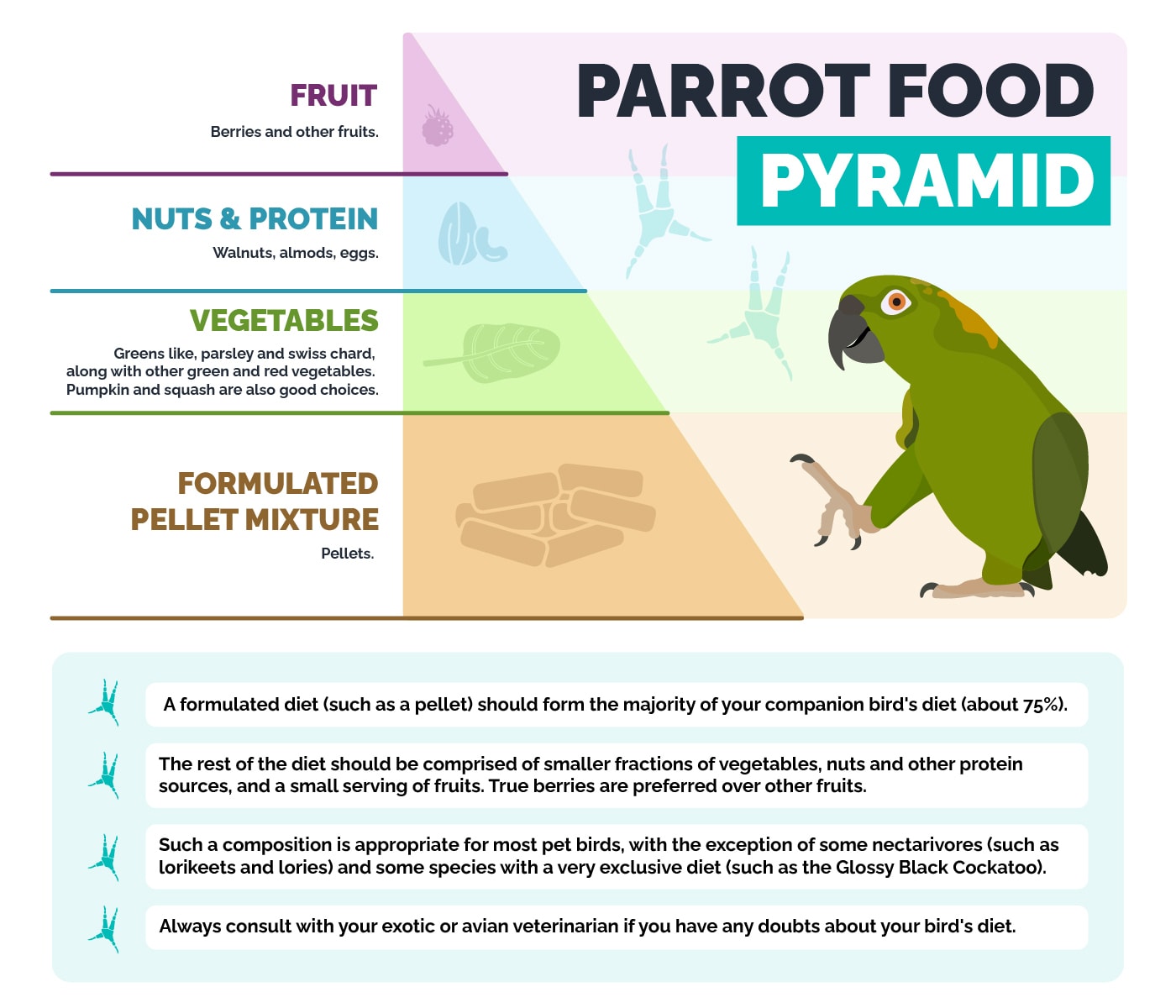
Cage/Housing Requirements
The absolute minimum smallest cage you want to buy for your monk parakeet is 24” x 24” x 24”, but that’s on the small side for a single bird. A bird in such a cage would need to be allowed outdoors for exercise since a cage of this size doesn’t allow them to fly comfortably (given their wingspan).
If feasible, we recommend getting a larger cage in the neighborhood of 48” x 48” x 48.” Bar spacing should be ½” to ⅝”. Horizontal bars are preferred over vertical bars to allow for climbing.
Exercise
Monk parakeets need not only a sizable cage to live and play in but regular supervised playtime outside their enclosure as well. This time can sate their exercise needs as well as their social appetite, and you can mix it up to keep it fresh every day. Training them to do tricks for treats, talking to them, and playing with toys are some ways you can keep your birds occupied and tucker out their little brains.
3 Little-Known Facts About the Monk Parakeet
1. They’re Illegal to Own in Certain Places
Because of their history as an agricultural pest in South America and abroad, monk parakeets are outright illegal to own or sell in certain US states. Let’s check out which states those are before you get your heart set on one.
States Where Monk Parakeets Are Illegal to Own:
They’re also illegal in areas of other countries. For example, they’re illegal in Western Australia.
2. Monk Parakeets Can Build Their Own Apartments
Monk parakeets are one of the showiest birds when it comes to building elaborate nests. They are one of just two species of parrots that build stick nests. Everyone in a nest helps gather materials, then the males meticulously craft small nests into large multi-room apartments suitable for pairs or larger groups of birds. They don’t just build it and move on, either. These nests are long-term commitments that the monk parakeet will constantly work on to keep it in good shape.
3. They’re Called Quaker Parrots for Their Gray Vest
The splotch of gray from the monk parakeet’s face down to their chest earned them the name Quaker parrot. Nobody’s exactly sure where it came from, but many think the gray vest resembles Quaker’s gray vest, or perhaps an old-timey friar’s monk hood.
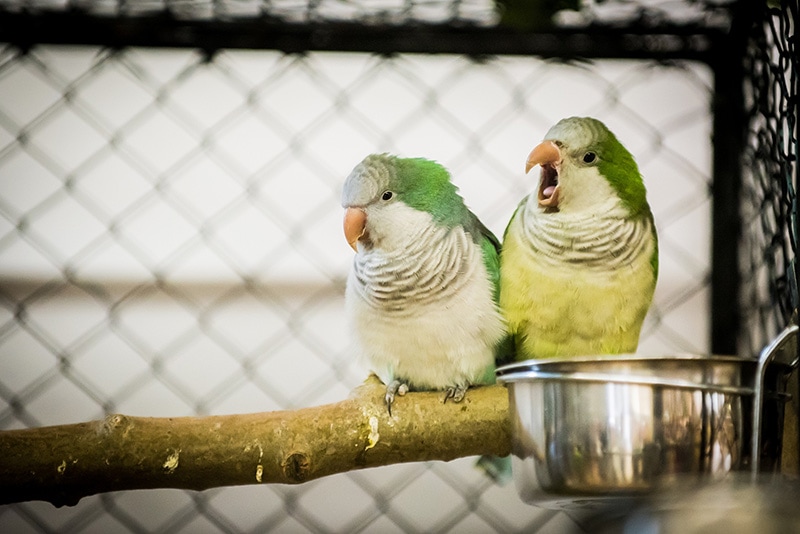
Conclusion
Monk parakeets are one of the best birds you can own, assuming you live in a state where they’re legal to own. As long as you give them regular attention, a large enough cage, and a balanced diet, your monk parakeet can become an essential member of the family for decades to come.
See also:
- Yellow-Chevroned Parakeet: Pictures, Personality, Food & Care Guide
- Anthracite Parakeet: Pictures, Personality, Food & Care Guide
Featured Image Credit: Roel van Moorsel, Shutterstock


